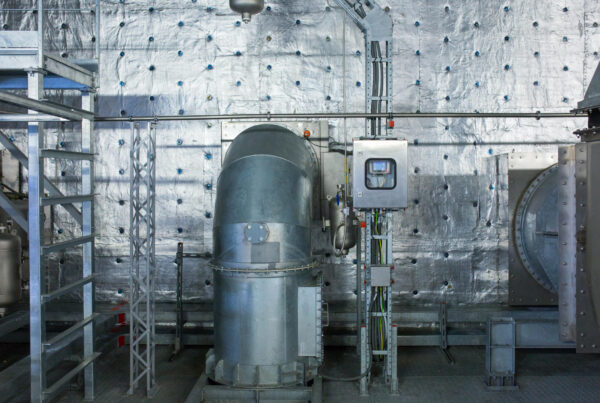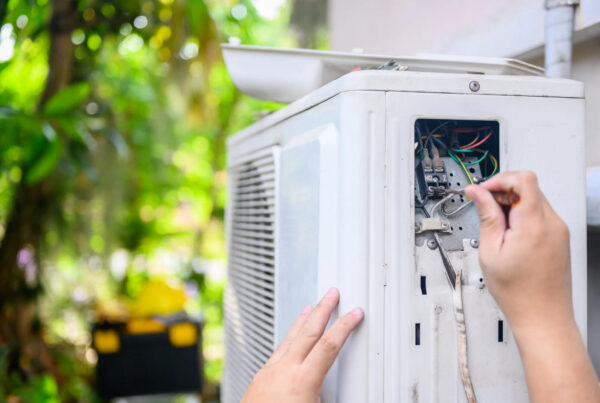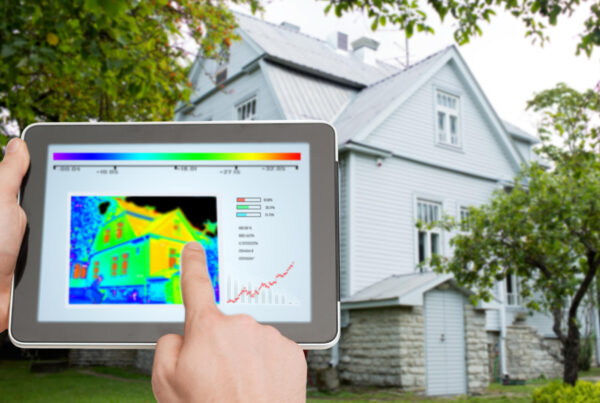Texas has seen a temperature rise of about 1.5˚F since the onset of the 20th century. During this century, record-breaking extreme heat events are anticipated.
In fall, indoor humidity control remains a big concern for Texas homeowners as it does the rest of the year. This begs the question: what causes humidity in a house? Why is it important to maintain a certain range of indoor humidity during fall?
Read this guide to find out.
What Causes Humidity in a House?
Home humidity refers to the amount of moisture or water vapor present in the air within a home. It can be influenced by different factors, inside or outside, especially during fall when temperatures can vary widely from day to night. Check out the main factors that affect indoor humidity.
Temperature
As aforementioned, temperature affects humidity. As the temperature inside your home increases, so does the air’s capacity to hold moisture. This results in lower relative humidity. This explains why dehumidifiers are often used during summer.
Conversely, lower home temperatures decrease the air’s moisture-holding capacity, leading to higher relative humidity. This makes it necessary to run humidifiers in the wintertime.
Ventilation
Ventilation systems are an essential part of your home because they allow for the exchange of indoor and outdoor air. The level of ventilation within the building affects indoor humidity.
Proper ventilation helps remove excess heat or cold from the building, improving humidity control. On the other hand, poor ventilation can increase moisture buildup indoors, leading to higher humidity levels.
Excessive ventilation is also bad for your home’s humidity, as it causes the air to become dry, resulting in lower humidity.
HVAC Systems
Mechanical air conditioning and heating systems, such as air conditioners and radiant floor heating systems can also affect your indoor humidity levels.
Air conditioners draw moisture from the air as part of the cooling performance. This can result in lower humidity. Luckily, some modern AC systems include a dehumidifying function to help with humidity control. This eliminates the need to run a separate dehumidifier unit.
Heating systems like forced-air units, can lead to dry air indoors, lowering humidity levels. This may warrant the need to use a humidifier.
Residential Insulation
The level of insulation within your residential building impacts the flow of air in and out via the building envelope.
If the building is properly insulated, it will trap moisture indoors. This can cause an increase in humidity levels. Poor insulation can also lead to increased humidity, as outside moisture can easily infiltrate the building.
Household Size and Occupancy
Household size also influences indoor humidity levels. Humans release moisture into the air when they breathe and through daily activities like cooking, bathing, and doing laundry. A larger household with higher occupancy and activity rates will more likely have higher humidity levels.
What Does Indoor Humidity Matter in Fall?
Controlling your home’s humidity levels during fall is essential for various reasons. Consider the key reasons below to take your indoor humidity seriously.
Comfort
Humidity levels affect the comfort level of your interior living space. High humidity can make the air feel warmer, while low humidity can make it feel cooler. Maintaining an ideal range of indoor humidity can help make your home feel comfortable during fall.
Indoor Air Quality
High levels of humidity can create the damp conditions that mold and mildew need to grow. Mold can release tiny spores that can be harmful to your respiratory health when inhaled. The musty smells and odors can further deteriorate your home’s indoor air quality.
Conversely, low humidity levels can cause dry skin, itchy eyes, and throat irritation. Maintaining consistent humidity levels can help prevent mold growth and promote a healthier living environment for your family.
Energy Efficiency
While temperature affects humidity, humidity influences how you perceive temperature. High humidity makes the air feel warmer, leading to increased use of air conditioning.
On the other hand, low humidity makes the air feel cooler, resulting in increased use of heating systems. By ensuring proper humidity control, you can significantly save money on your monthly energy bills.
Property Damage
High humidity can cause wood to swell while low humidity can cause it to shrink and crack. This can lead to warping or rotting of wooden furniture, floors, or trim.
Proper humidity levels can help preserve the integrity of wood and the interior surfaces of your home. It is also crucial for the preservation and performance of electronic and musical instruments.
How Can You Balance Comfort and Air Quality?
Want to maintain a comfortable and healthy humidity level in your home during fall? Check out these valuable tips.
Ensure Proper Ventilation
Allow natural ventilation by opening windows and doors on mild fall days. Proper ventilation can help prevent the buildup of moisture, resulting in improved indoor air quality.
Use Humidifiers and Dehumidifiers
When humidity is too low, use humidifiers to add moisture to the air. When humidity is too high, use dehumidifiers to extract excess moisture.
These two devices can help you maintain a comfortable home humidity level throughout fall. While humidifiers and dehumidifiers can help control your home’s humidity levels, they’re not a substitute for proper HVAC maintenance.
Use a Humidity Sensor
Humidity monitoring is crucial to ensuring proper humidity control in your home. Use a humidity sensor to track the indoor humidity level and make informed adjustments.
What Is the Ideal Indoor Humidity Level?
The ideal indoor humidity should range between 30%-50% to prevent humidity-related problems in your home. The primary factors that lead to variations in humidity requirements for homes are:
- Seasonal changes
- Weather changes
- Your home’s location
Consider enlisting the help of a professional if you’re unsure about the ideal humidity level for your home in the fall.
Contact Us for Help With Fixing Your Home’s Humidity in Fall
Now that you know what causes humidity in a house, you should shift your focus to creating a comfortable and healthy indoor living environment. You may need to work with an experienced HVAC contractor.
At Guy’s Air Conditioning and Heating, we help Houston homeowners keep their air conditioning and heating systems in tip-top shape so they can enjoy uninterrupted service throughout the year. Feel free to contact us today to discuss your home’s heating and cooling needs.





